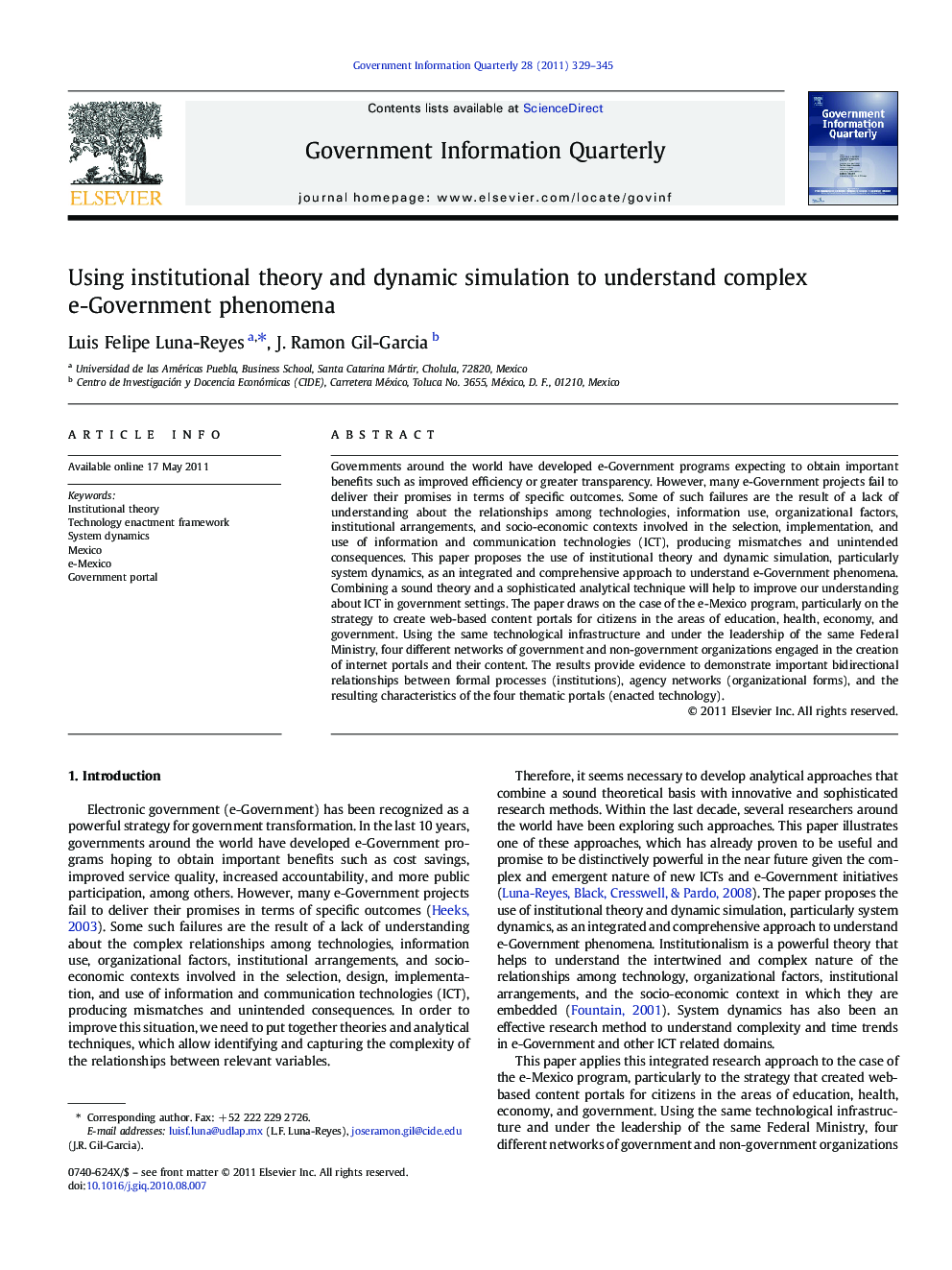| Article ID | Journal | Published Year | Pages | File Type |
|---|---|---|---|---|
| 1024734 | Government Information Quarterly | 2011 | 17 Pages |
Governments around the world have developed e-Government programs expecting to obtain important benefits such as improved efficiency or greater transparency. However, many e-Government projects fail to deliver their promises in terms of specific outcomes. Some of such failures are the result of a lack of understanding about the relationships among technologies, information use, organizational factors, institutional arrangements, and socio-economic contexts involved in the selection, implementation, and use of information and communication technologies (ICT), producing mismatches and unintended consequences. This paper proposes the use of institutional theory and dynamic simulation, particularly system dynamics, as an integrated and comprehensive approach to understand e-Government phenomena. Combining a sound theory and a sophisticated analytical technique will help to improve our understanding about ICT in government settings. The paper draws on the case of the e-Mexico program, particularly on the strategy to create web-based content portals for citizens in the areas of education, health, economy, and government. Using the same technological infrastructure and under the leadership of the same Federal Ministry, four different networks of government and non-government organizations engaged in the creation of internet portals and their content. The results provide evidence to demonstrate important bidirectional relationships between formal processes (institutions), agency networks (organizational forms), and the resulting characteristics of the four thematic portals (enacted technology).
Research highlights► We model interorganizational networks which develop government content portals. ► We create four simulation scenarios grounded in Mexican interorganizational networks. ► Organizational engagement and content creation form a key reinforcing process. ► Processes legitimacy influences both organizational engagement and content creation. ► Inertia from previous collaborations also influences organizational engagement.
